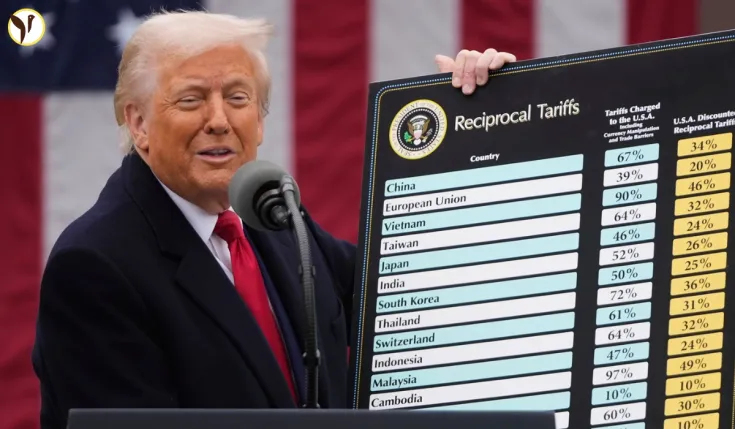The Dollar's Rollercoaster: Trump's Tariffs and Global Jitters
Okay, so the US dollar's been on a wild ride lately. Honestly, who saw this coming? A big part of the drama is President Trump's announcement of those massive reciprocal tariffs. It’s sent shockwaves through the global economy, and the dollar's taken a serious hit.
A Dollar's Dive and the World's Reaction
The US Dollar Index (DXY) – that’s the big benchmark – plummeted to its lowest point in six months. Yikes! The worry is that Trump's tariffs will trigger a global slowdown, maybe even a recession. Experts are even whispering the dreaded “S-word”: stagflation. That’s slow economic growth *and* high inflation – a truly nasty combo. It’s basically the Fed's worst nightmare; higher tariffs could completely undo their efforts to keep inflation under control.
The euro, on the other hand, has been on a climb. The EUR/USD pair soared past 1.1100 – its highest since October! People are scrambling for safer bets, and the euro is looking pretty good right now. The USD/CAD pair also took a dive, plummeting near 1.4100. Even though Canada and Mexico got some tariff exemptions, the overall gloomy outlook for the dollar overshadowed the good news for the Canadian dollar.
Some Key Markets and Their Stories
Japan's Yen: The USD/JPY pair also tanked, hitting its lowest point in over three weeks. Investors are flocking to safe havens, and the Japanese yen is a popular choice. This is reflected in the Nikkei 225 index which took a pretty significant hit, highlighting anxieties about the impact on Japanese exports.
The Euro's Rise: Despite the growing trade war fears, the euro's been strengthening against the dollar, mostly because the dollar is so weak. European Commission President Ursula von der Leyen has even threatened countermeasures if things don't improve with the US. It’s getting tense!
What's Next for the Dollar? Crystal Ball Time
The upcoming US Nonfarm Payrolls (NFP) data for March is going to be HUGE. It’ll give us a much better idea of what the Federal Reserve might do next. Other important data releases, like the ISM Services PMI, will also influence the dollar. Some analysts are predicting more weakness for the dollar, but honestly, the market's so volatile right now that it’s anyone’s guess.
It’s a bit like watching a slow-motion train wreck; you know it’s bad, but you can't quite look away. Investors need to keep a close eye on economic indicators and geopolitical developments. It’s all hands on deck. It’s pretty much impossible to predict with any certainty how things will unfold.
The Bottom Line: Buckle Up!
President Trump's tariffs have created a huge amount of uncertainty in the global markets, and the dollar is feeling the pinch. The short-term picture looks pretty shaky, with more volatility likely, and safe-haven assets looking attractive. The long-term implications are still unclear, so staying informed and talking to a financial advisor before you make any investment decisions is critical. This isn't a game to play without guidance!






